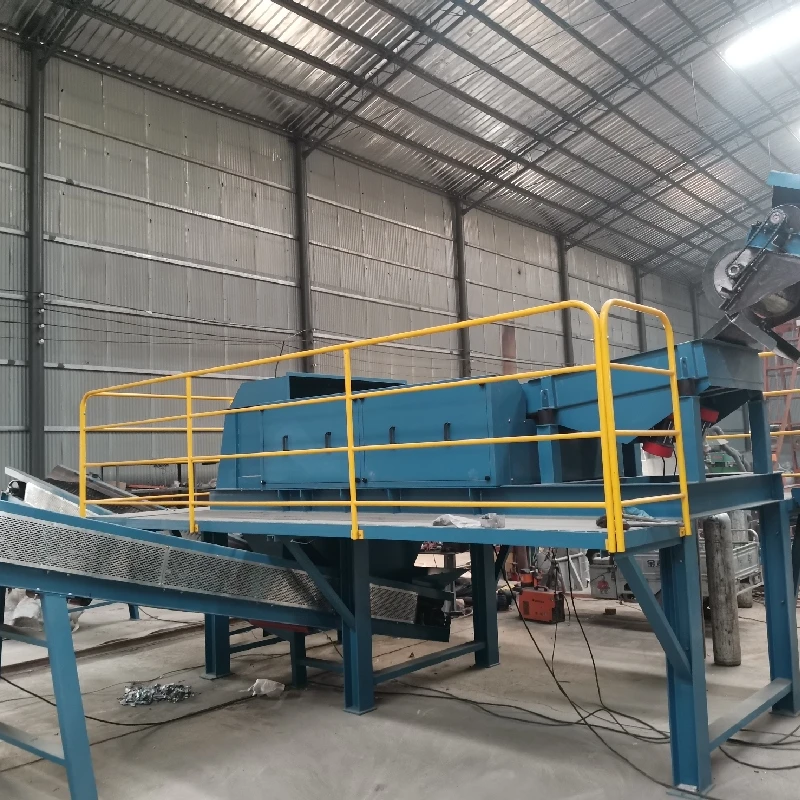

Nov . 20, 2024 16:07 Back to list
The Cost of Establishing a Metal Recycling Plant
As the world increasingly focuses on sustainability and environmental conservation, the metal recycling industry has emerged as a vital sector. Metal recycling helps to reduce waste, conserve natural resources, and decrease greenhouse gas emissions. However, despite its environmental benefits, establishing a metal recycling plant involves considerable costs that potential investors must thoroughly evaluate.
Initial Capital Investment
The upfront costs of setting up a metal recycling plant can be significant. These expenses typically include land acquisition, facility construction, machinery procurement, and initial operational costs. The price of land varies greatly depending on the location, with urban areas generally being more expensive than rural sites. Constructing a facility requires compliance with zoning laws and environmental regulations, which can add to the expenses. Moreover, purchasing heavy machinery such as shredders, crushers, and furnaces represents a considerable portion of the investment. These machines are essential for effectively processing various types of metals, including aluminum, steel, and copper.
Operational Costs
Once a metal recycling plant is established, operational expenses come into play. These costs encompass labor, utilities, maintenance, and administrative expenses. Hiring skilled technicians and workers who are knowledgeable in recycling processes is critical, as they ensure the efficient operation of the plant. Utility costs, including electricity and water, can fluctuate based on market conditions and the plant's size. Ongoing maintenance of sophisticated machinery is also necessary to minimize downtime and ensure safety standards, which can add to operational costs in the long run.

Regulatory Compliance
The metal recycling industry is subject to intricate regulations aimed at protecting the environment and public health. Compliance with these regulations often requires additional investment in specialized equipment and systems to monitor emissions and ensure safe handling of materials. This may involve setting up filtration systems, noise reduction measures, and other environmental safeguards. Moreover, regular inspections and audits can incur additional costs if the facility needs to implement corrective measures.
Market Conditions
The financial viability of a metal recycling plant is heavily influenced by the market conditions for scrap metals. Prices for recycled metals can be volatile, affected by global demand, economic cycles, and competition from other materials. Investors must conduct thorough market analyses and predictions to ensure they can sustain operations during less favorable economic periods. Establishing partnerships with reliable suppliers of scrap metal and potential customers for recycled products can help mitigate risks associated with fluctuating prices.
Conclusion
In conclusion, while the establishment of a metal recycling plant offers significant environmental benefits and potential profitability, it requires careful financial planning and consideration of various costs. Initial capital investments, ongoing operational expenses, regulatory compliance, and market conditions all play pivotal roles in determining the overall cost and success of the venture. Investors must conduct thorough due diligence and be prepared for the financial commitment necessary to launch and maintain a metal recycling plant. With the increasing global focus on sustainability, however, those who navigate these challenges effectively may find themselves at the forefront of a burgeoning industry with lasting positive impacts on the environment.
Latest news
Troubleshooting Common Eddy Separator Problems
NewsJul.04,2025
The Role of Metal Recycling Plants in Circular Economy
NewsJul.04,2025
The Impact of Recycling Line Pickers on Waste Management Costs
NewsJul.04,2025
Safety Features Every Metal Shredder Should Have
NewsJul.04,2025
How Industrial Shredders Improve Waste Management Systems
NewsJul.04,2025
How Cable Granulators Contribute to Sustainable Recycling
NewsJul.04,2025